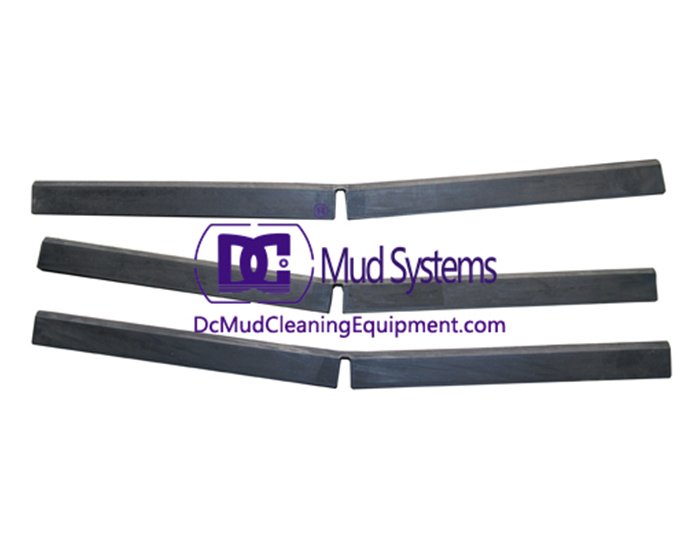Understanding Drilling Mud and Shale Shakers in Oil and Gas Operations
In the realm of oil and gas drilling, the effective management of drilling fluids, commonly referred to as drilling mud, is crucial for operational success. One of the essential components of this process is the shale shaker, a device designed to separate the cuttings produced during drilling from the mud, thereby ensuring the efficiency and longevity of the drilling operation.
What is Drilling Mud?
Drilling mud is a vital fluid that serves multiple functions during the drilling process. Primarily, it helps to cool and lubricate the drill bit, while also creating hydrostatic pressure to prevent the influx of formation fluids into the wellbore. Additionally, drilling mud carries rock cuttings to the surface, stabilizes the wellbore, and minimizes fluid loss into the formation. The composition of drilling mud can vary, consisting of water-based, oil-based, or synthetic-based fluids, each selected based on the specific requirements of the drilling operation and the geological formation being drilled.
The Role of Shale Shakers
Central to the process of drilling mud management is the shale shaker, a mechanical device that plays a critical role in solid separation. As the drilling mud circulates back to the surface, it brings with it rock cuttings and other solid particles generated by the drilling process. The shale shaker utilizes a vibrating screen mechanism to effectively filter out these solids from the mud.
How Shale Shakers Work
Shale shakers operate on the principle of vibration, which helps agitate the drilling mud as it flows across the screens of the shaker. The screens are typically made from high-quality steel mesh, sized appropriately to allow the desired cuttings to pass while retaining larger particles. When the mud is introduced to the shaker, the vibrating action causes the larger solids to bounce across the top of the screen, while the smaller particles and fluid are allowed to pass through. This action not only separates the solids but also helps in maintaining the viscosity and density of the drilling mud.
drilling mud shale shaker
Efficiency and Design Variations
The efficiency of a shale shaker can significantly impact the overall drilling operation. Advanced shakers are designed for optimal performance, incorporating features such as adjustable vibration frequency and amplitude, multiple screening decks, and efficient mud flow channels. Multi-deck shakers allow for different mesh sizes on each deck, enabling a staged separation process. This multi-step filtration enhances the quality of the drilling mud returned to the circulation system, which can lead to reduced fluid and material costs.
Importance of Solids Control
Controlling the solids content of drilling mud is crucial for several reasons. Excessive solids can lead to increased wear on the drilling equipment, impaired drilling performance, and challenges in mud circulation. Proper solids control through shale shakers not only enhances the lifespan of the drilling fluids but also contributes to safer drilling operations by minimizing risks associated with stuck pipes and blowouts.
Future of Shale Shakers
As the oil and gas industry evolves, so does the technology surrounding shale shakers and drilling mud management. Innovations such as automated systems for real-time monitoring, advanced materials for screens, and eco-friendly drilling mud formulations are already making headway. Greater efficiency and sustainability are becoming increasingly important as operators face both economic and environmental pressures.
Conclusion
In conclusion, the combination of effective drilling mud management and the utilization of shale shakers is indispensable in modern drilling operations. These shakers not only help in maintaining the efficiency of drilling fluid but also play a significant role in ensuring the safety and success of oil and gas exploration. As technology continues to advance, we can anticipate even further improvements in shale shaker designs and drilling mud management practices, paving the way for more efficient and environmentally sensitive drilling operations in the future.
 Linear Motion Shale Shaker In Drilling Rig
Linear Motion Shale Shaker In Drilling Rig  Oilfield Mud Cleaner
Oilfield Mud Cleaner  Drilling Fluid Decanter Centrifuge
Drilling Fluid Decanter Centrifuge  Drilling Mud Desander
Drilling Mud Desander  Hydrocyclone Desilter
Hydrocyclone Desilter  Centrifugal Pump/Centrifugal Mud Pump
Centrifugal Pump/Centrifugal Mud Pump  Shear Pump
Shear Pump  Jet Mud Mixer
Jet Mud Mixer  Horizontal Mud Agitator
Horizontal Mud Agitator  Constant Pressure Drilling Fluid Mud Gas Separator
Constant Pressure Drilling Fluid Mud Gas Separator  Mud Gun
Mud Gun  Mud Tank
Mud Tank  Solids Control System Vacuum Degasser
Solids Control System Vacuum Degasser  Flare Ignition Device
Flare Ignition Device  Diesel Tank
Diesel Tank  Submersible Slurry Pump
Submersible Slurry Pump 






































